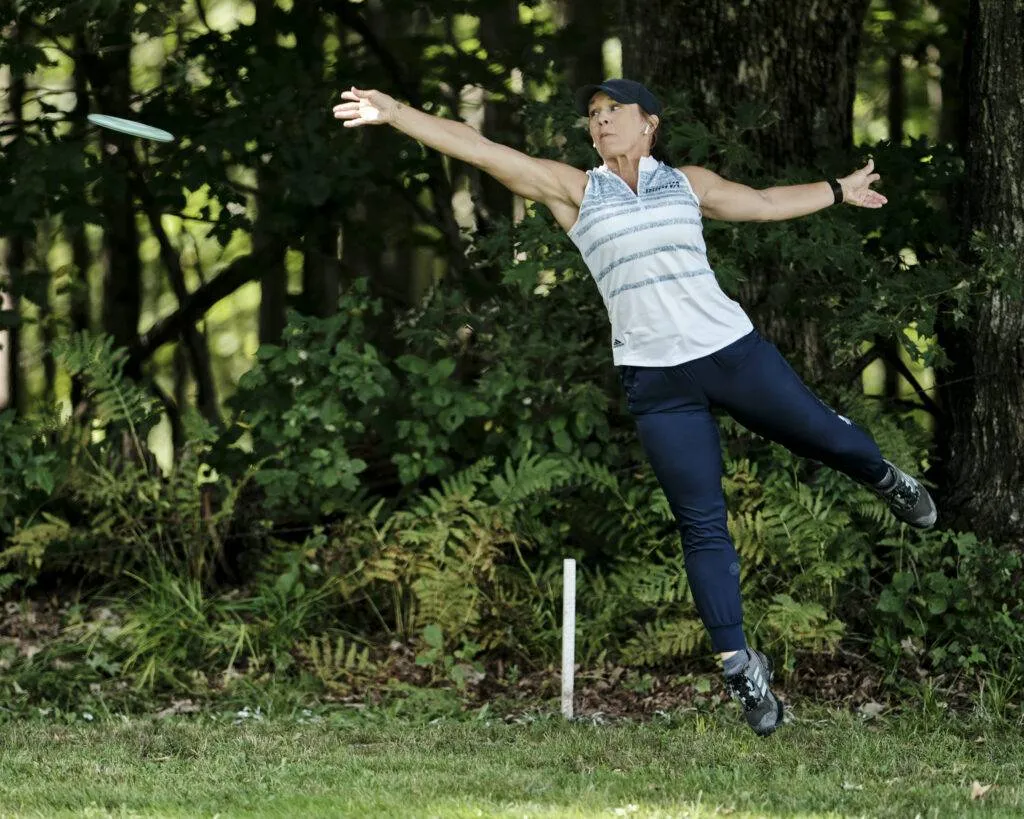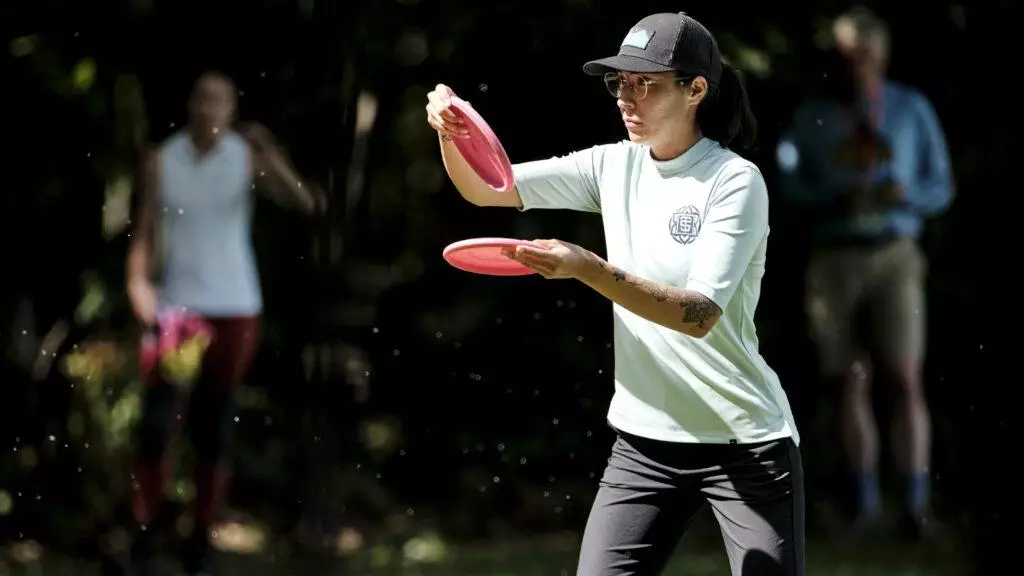Last updated on November 15th, 2023 at 05:03 am
Last updated by Maredith Damasco
New players must understand disc golf rules, especially disc golf putting rules, to avoid confusion and penalty strokes.
In this article, we’ll explore the crucial rules of disc golf putting. Understanding these rules benefits players since putting is both fundamental and technical, underscoring its significance in disc golf.
Disc Golf Putting: The 10 Meter and Other Rules
Within 10 meters, PDGA rules classify throws as putts from the target base. Players must maintain balance to avoid a stance violation and penalty stroke.
To putt correctly according to the PDGA rulebook, familiarize yourself with the various putting rules it contains.
The Lie
In disc golf, your lie, per PDGA rules, is determined by leaving the disc where it landed or using a mini marker placed in front and at the edge of the disc, with the back of the mini-marker disc as your lie.
Your lie measures 20 cm by 30 cm, like a sheet of paper; ensure your planted foot lands within this area behind your mini marker or disc when throwing or putting.
The Putting Stance
As per PDGA rules, one foot on the lie must not touch the ground in front of it during your throw and release, staying within the “sheet of paper” area behind the lie.
There are primarily 3 different putting stances.
Staggered Stance
The staggered stance is a predominant technique adopted by many disc golf players during putting. Characterized by one foot being placed slightly ahead of the other, it facilitates a natural, forward-backward rocking motion. This motion, in turn, enables players to harness significant power from their legs, providing both stability and force to the putt. By effectively channeling this energy from the ground up, disc golfers can achieve more controlled and powerful putts, making the staggered stance an invaluable asset on the green.
Straddle Putt
The straddle putt is a distinct technique in disc golf that offers both precision and adaptability. In executing this putt, a player positions the disc between their legs, bends the knees, and then propels the disc straight towards the basket. What makes the straddle putt particularly advantageous is its utility in challenging terrains: if there’s a tree or any obstruction in the way, this stance allows the golfer to easily reach out and navigate around it. Putting rules only require one foot to stay behind the marker, granting players added flexibility and maneuverability while maintaining a legitimate stance. This blend of functionality and form makes the straddle putt a go-to choice for many disc golfers.
Turbo Putt

The turbo putt stands out as a distinctive overhand putting technique. Primarily, it’s a go-to method when faced with low-lying obstructions that hinder the use of traditional straddle or staggered stances. In such situations, the turbo putt allows the disc golfer to loft the disc over these barriers with precision. Interestingly, while its utility is evident in tricky terrains, there’s a subset of disc golfers who have adopted the turbo putt as their primary style, swearing by its effectiveness and using it as their primary putting technique regardless of the scenario. The turbo-putt can also be useful for putting into high elevated baskets.
The 10 Meter Circle or “The Circle”
The 10-meter circle around the basket is the putting area, extending 10 meters or less from the base of the basket, and you must demonstrate control to move towards the target. When putting, you cannot go beyond the rear edge of the marker disc without first displaying balance and control. Once you throw the putt, you cannot go past the rear of the marker disc until you show balance and control.
Past 10 meters, step beyond your marker disc, keeping one supporting point behind it and the other foot ahead, following the stance rule.
Putting Outside the 10-meter Circle
Outside the 10-meter circle, you don’t have to worry about “holding balance” and can fully leverage the rules to maximize power in three ways when putting with these putting styles.

Step Putt
In a step putt, one foot must stay behind the disc marker, and release the disc before the other foot lands; otherwise, it’s a violation with a stroke penalty.
The Jump Putt
In a jump putt, start with your stance, release the disc before leaving the ground, and land ahead of your lie, with both feet leaving the ground after the throw.
Modified Step Putt
In a modified step putt, keep your main supporting foot behind the marker disc and release the disc before your other foot lands.
Conclusion
Learning and understanding the disc golf putting rules is essential for all disc golf players. You must know the rules before performing a putt, as outlined in the rulebook. As you know, there are many things that you need to know if you want to putt by the rules.
Now that you know the rules of putting, consider improving your putting with these great putters.

